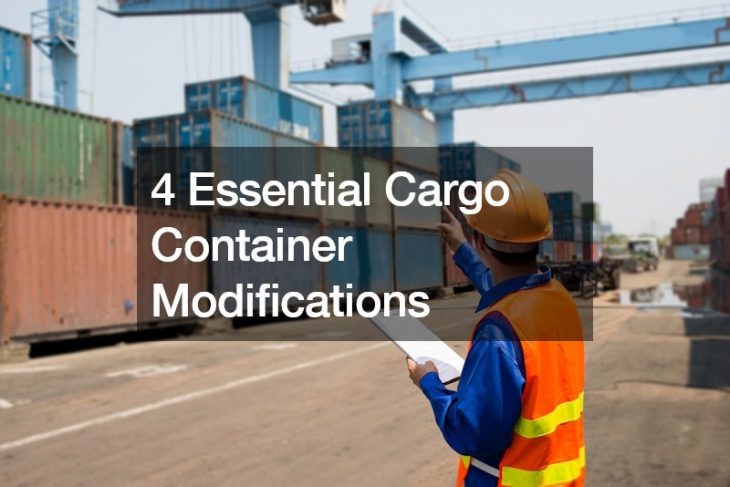
 Now that spring is nearly here, many renters and homeowners may be thinking ahead to embracing some new digs. In fact, 33% of renters move each year — which means that if your lease is ending soon, you might want to start making plans. Moving day itself is always stressful, particularly if you’re doing the DIY route. But even if you’ve hired professional help, things can still go awry. That’s especially true if you haven’t protected your possessions the way you should. Unfortunately, you could find out the hard way that inadequate preparation could result in irreparable damage. To avoid that scenario, here are some essential moving tips to keep in mind so that your belongings will make it to your new home safe and sound.
Now that spring is nearly here, many renters and homeowners may be thinking ahead to embracing some new digs. In fact, 33% of renters move each year — which means that if your lease is ending soon, you might want to start making plans. Moving day itself is always stressful, particularly if you’re doing the DIY route. But even if you’ve hired professional help, things can still go awry. That’s especially true if you haven’t protected your possessions the way you should. Unfortunately, you could find out the hard way that inadequate preparation could result in irreparable damage. To avoid that scenario, here are some essential moving tips to keep in mind so that your belongings will make it to your new home safe and sound.
Clean Your Furniture First
Roughly 91% of sofa buyers say quality and durability are very important when making this furniture purchase. But your couch, chairs, and other large decor items won’t last for long if you don’t clean them properly prior to moving. That’s because even small pieces of dirt and debris could damage your upholstery or wood furniture when it’s being loaded into a truck and transported to your new house. Make sure to give your furniture a good once-over with a dust cloth or a hand-held vacuum, especially if it’s been stored in an attic, garage, or basement. Not only can this protect your furniture from damage, but it can also keep you from dragging dirt into your new space.
Measure and Disassemble
It’s a good rule of thumb to disassemble whatever furniture you can before you try to move it. This will allow you to lighten the load and avoid the possibility of damaging these pieces on the way out. While you don’t need to completely take everything apart (since you’ll probably risk losing smaller components along the way), this can definitely help to make this process more manageable. If there are pieces that really can’t be disassembled, make sure to measure these pieces and your doorways carefully. That goes for the entryways and exits both at your existing home and your new property. This can help you to develop a comprehensive plan of action for those items that will otherwise prove tricky.
Use Protective Materials
Of course, you can’t expect to move your furniture safely without covering it with padding, wrapping, and other materials. Bubble wrap, plastic sheeting, furniture pads, thick blankets, and other materials can be used to ensure your items don’t become damage during loading, transport, or unloading. Keep in mind that if you decide to hire movers, they may be able to supply you with some of these items. If you go the DIY route, however, you’ll have to source them yourself. Don’t assume that telling someone to “be careful” with a particular piece will mean your items will be safe from damage. That’s especially true with antiques or older pieces that may not be in the best shape. When in doubt, err on the side of overprotecting rather than under-protecting.
Take an Inventory
You should make a habit of taking a moving inventory well in advance of the big day so that you can keep track of things that might otherwise get lost in the shuffle. If you happen to misplace some valuables, this can be particularly distressing. It’s a good idea to write down an inventory and take photos of your belongings prior to your move and take note of corresponding box numbers, condition, and moving details. This can help you to retain proof of ownership and can allow your move to go more smoothly. There are even apps that can help you sort out all the details. Although it might seem like just another unnecessary task to do before moving day, it’s one that can provide you with major peace of mind.
Don’t Share Information
When it comes to protecting your property, you should always be cautious. You might be really excited about your upcoming move or might be hoping to enlist the help of friends or family on the day… but resist the urge to post about it on social media. Contact people on an individual basis if you require recommendations or assistance rather than allowing the whole of the internet to know exactly when you’re moving. Otherwise, a vacant home could be targeted for vandalism or you might risk having items stolen if you’re not moving everything at once. To that end, you should also label boxes by number or by room, rather than labeling by their contents. A criminal who sees the word “jewelry” in big bold letters written on a yet-to-be-loaded box won’t think twice about snagging your belongings for themselves. The less information you share with the general public, the more inherent protection you’ll have.
Even with all your efforts, it’s still possible that one of your possessions could still be damaged on moving day due to carelessness or a breakdown in communication. But if you follow these tips, you’ll be in a much better position to safeguard your stuff and to benefit from a smooth move.













